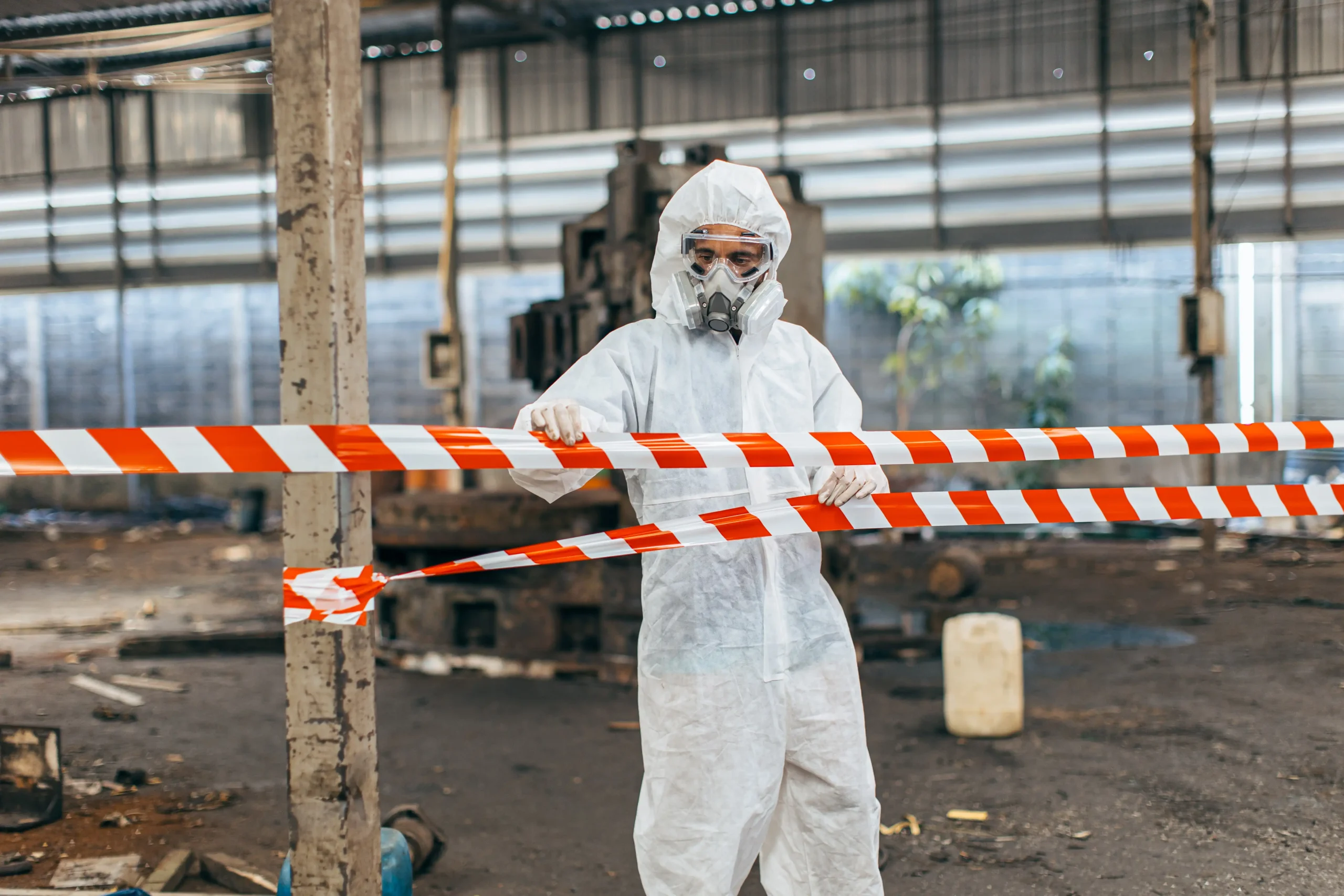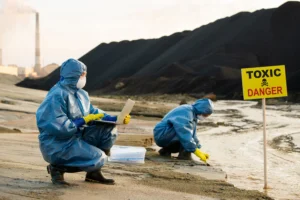Although asbestos use has been banned in the UK since 1999, some older structures still contain the mineral and require strict handling regulations to prevent serious health risks. It mainly includes the CAR 2012, which outlines all the duties related to the removal and disposal of ACMs and any type of involvement with asbestos management.
The regulations also categorise who can be allowed to handle and what type of specific asbestos-related tasks can be performed. Understanding these standards is mandatory for property owners and organizations before renovating or demolishing areas where the chemicals may be present.
Stay Compliant—Laws Governing Asbestos Management and Removal
Asbestos is a hazardous substance and causes more than 5,000 deaths per year in the UK due to associated respiratory disorders. To control the situation and ensure the protection of anyone involved in working, comprehensive law enforcement has been introduced. These rules apply to property owners, employers, and licensed contractors who are involved in managing and removing asbestos.
Primary Legal Framework — The Control of Asbestos Regulations 2012
The Act came into force on 6th April 2012 and replaced all previous regulations. This is the fundamental of asbestos management legislation in the UK. CAR 2012 designates a “duty holder” responsible for identifying, managing, and controlling risks associated with asbestos-containing materials. The standard is essential for maintaining safety in workplaces and public buildings where the product is suspected.
Main Provisions
- Specified the responsibilities of duty holders like
- They must conduct thorough assessments to determine the presence of asbestos in non-domestic premises.
- Develop and maintain management plans that outline how to deal with any identified ACMs and minimize the risk exposure.
- Before any construction, refurbishment, or demolition work, the duty holder must perform comprehensive surveys to locate the ACMs.This helps inform workers of existing hazards.
- CAR 2012 work involving asbestos into three types
- Licensed Work– requires a certified contractor for high-risk ACMs.
- Notifiable Non-licensed Work— tasks that may not require certification but must be reported to the HSE due to potential risk.
- Non-licensed Work–recognized as low-risk but still necessitates adherence to safety guidelines.
- The regulation emphasizes the importance of training for employees who might encounter asbestos during their duties. This includes
- Educating employees about ACMs and the potential health hazards associated with them.
- Training in emergency procedures and safe work practices when dealing with asbestos.
- The HSE enforces compliance with CAR 2012. It monitors adherence to safety regulations and can impose penalties for violations. Duty holders must ensure compliance to avoid legal consequences.
Health and Safety at Work Act 1974 — Prioritizing Protection
The UK underlines the responsibilities of employers to ensure workplace health and safety. The HSWA aims to protect others who may be affected by work-related activities, as risk associated with asbestos exposure. It applies to all employers and employees within the UK and covers virtually all sectors, both private and public. It works on the following principles
- Employers have a legal duty to ensure, as far as reasonably practicable.
- Sets out requirements to protect employees from risks to their health and ensure they have easy access to safe working conditions.
Main Provisions
- Organizations must take adequate steps to safeguard the health. They must make sure
- The workplace is safe and without risks to health by maintaining machinery and equipment.
- Identify and control potential hazards in the area.
- Develop strategies and policies that outline health responsibilities.
- Labours also have responsibilities under the HSWA, such as
- Adhere to all measures established by their owner and participate in training sessions.
- Ensure their actions do not put themselves or others at risk while performing tasks.
- Must cooperate with the company’s safety policies and regulations, reporting any issues or hazards they observe.
The act also imposes duties on contractors, suppliers, and self-employed individuals. HSWA also serve as a framework for subsequent regulations and approved code of practices to further clarify and expand upon the general rules set out in the Act.
Contact an expert asbestos removal specialist complying with all the safety rules and regulations to get professional services.
Control of Substances Hazardous to Health Regulations — Prevent Exposure
Asbestos waste is classified as hazardous and must be disposed of at licensed facilities. COSHH is a vital component of UK legislation to minimise the risks associated. First introduced in 2002 and subsequently amended for workers exposed to asbestos-like substances. COSHH applies to most workplaces and covers a wide range of chemicals, biological agents and materials that can cause ill health.
Main Provisions
- Under COSHH, employers must conduct thorough risk assessments to identify the dangerous substances present in the surroundings and evaluate potential health issues associated with their use.
- Assess how harmful substances could affect, including the routes of exposure (inhalation, skin contact, ingestion).
- Determining the necessary control measures to reduce the issues.
- Firms must implement effective control measures to mitigate exposure to dangerous elements.
- Replace the hazardous substance with less harmful alternatives.
- Using equipment such as fume hoods or local exhaust ventilation to remove contaminants from the workplace.
- Provide suitable PPE, such as gloves and respiratory equipment, for employees when exposure cannot be adequately controlled.
- Employers have a responsibility to establish health surveillance systems. These systems aim to monitor the effects resulting from exposure and identify adverse impacts early.
- Labours must have relevant information, instruction and training about all types of suspected chemicals.
Conclusion:
Under the UK’s strict rules, proper management and removal of asbestos protect workers and the public from direct contact with harmful fibres. Duty holders ensure the working environment is safe for workers through the Control of Asbestos Regulations 2012 and effective waste disposal. Compliance with all legal requirements set out for employers, employees and the surrounding people is essential for high-risk removal and avoiding serious health problems.




